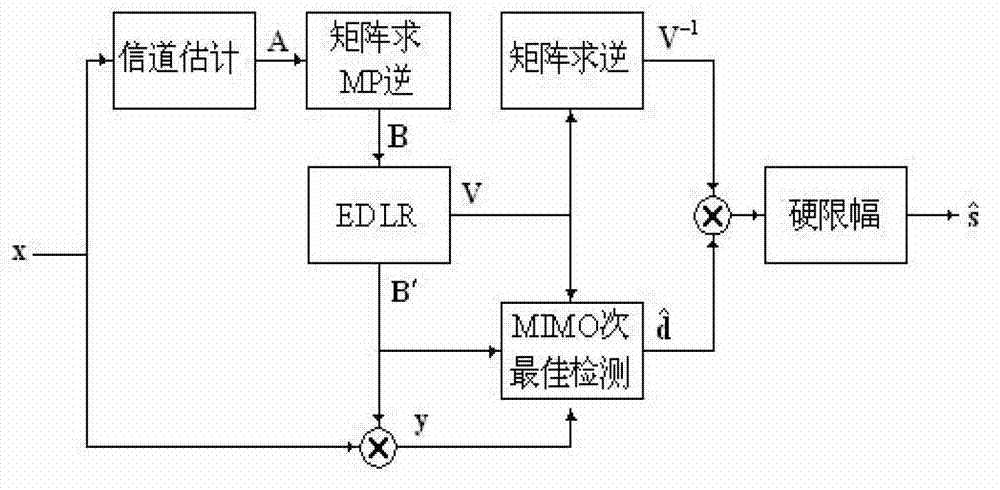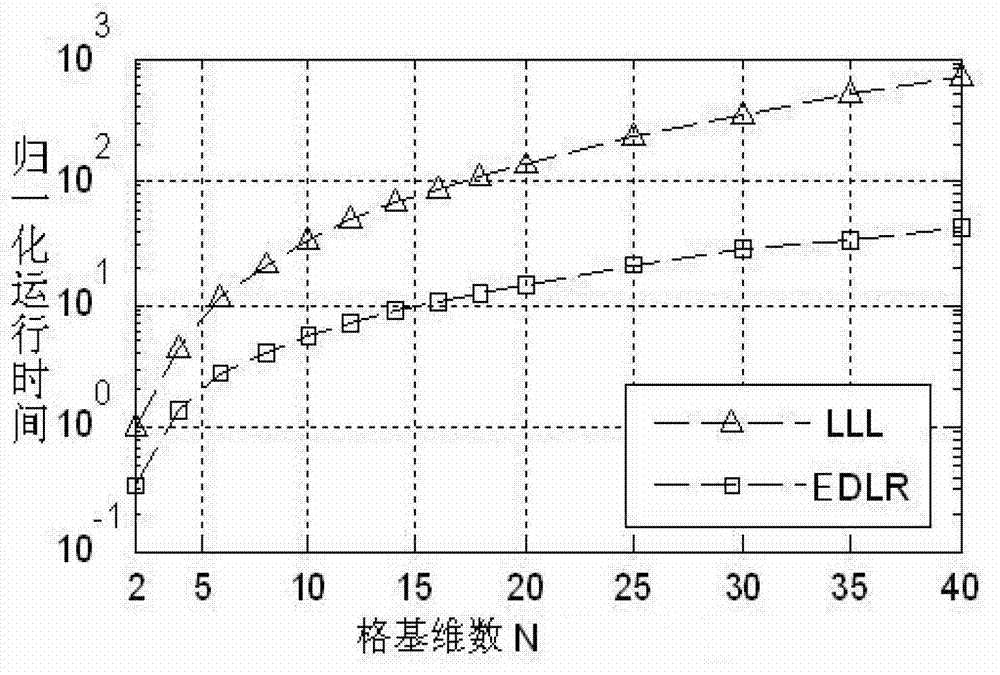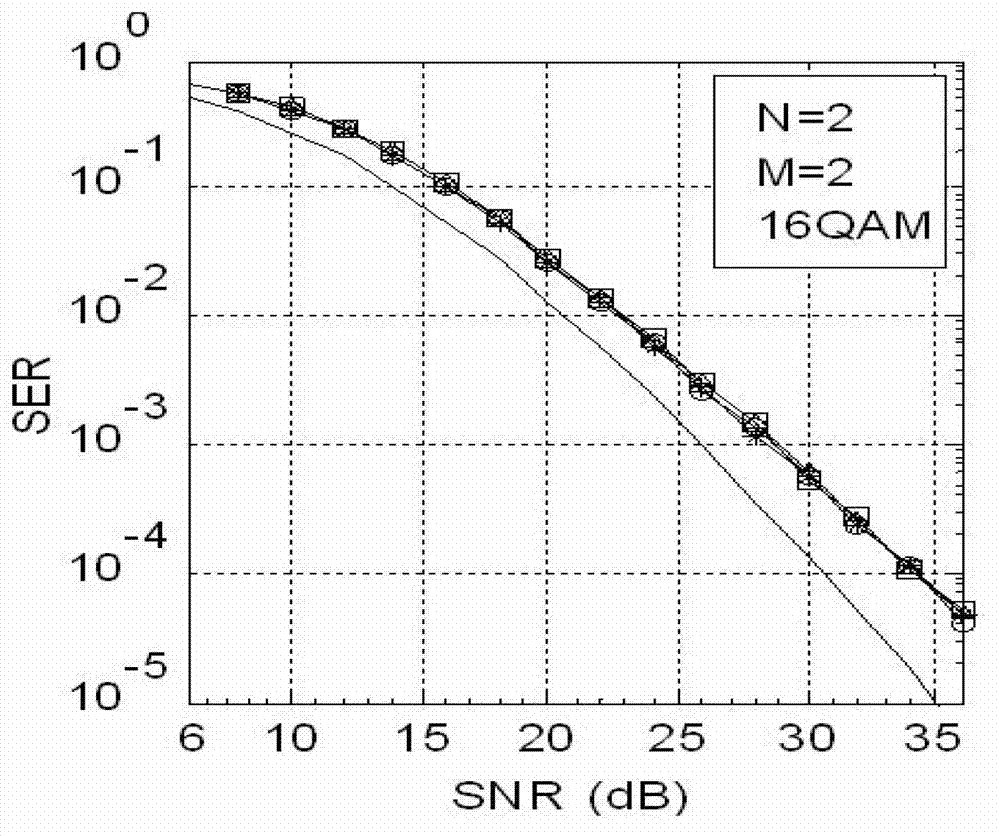Dual lattice reduction auxiliary detection method of multiple input multiple output (MIMO) signal
An auxiliary detection and grid reduction technology, applied in the direction of preventing/detecting errors through diversity reception, digital transmission systems, electrical components, etc., can solve the problems of high computational complexity and large computational complexity, and achieve complexity reduction, The effect of superior detection performance
- Summary
- Abstract
- Description
- Claims
- Application Information
AI Technical Summary
Problems solved by technology
Method used
Image
Examples
Embodiment Construction
[0047] Below in conjunction with the accompanying drawings, the dual lattice reduction auxiliary detection method of the MIMO signal proposed by the present invention will be described in detail:
[0048] figure 1 The dual lattice reduction assisted detection method for MIMO signals shown includes multiple functional modules such as channel estimation, matrix inversion, EDLR, MIMO suboptimal detection, and clipping judgment.
[0049] The dual lattice reduction auxiliary detection method for MIMO signals, the specific implementation steps of the EDLR module are as follows:
[0050] The input of the EDLR process: the basis of the dual lattice L(B), that is, the MP inverse matrix B of the channel gain matrix A;
[0051] The output of the EDLR process: the reduction basis B′ of the dual lattice L(B) and the unimodular matrix V;
[0052] Step A, initialization, assigning the matrix V as an identity matrix;
[0053] Step B, set the flag Let the integer variable j take values ...
PUM
 Login to View More
Login to View More Abstract
Description
Claims
Application Information
 Login to View More
Login to View More - R&D
- Intellectual Property
- Life Sciences
- Materials
- Tech Scout
- Unparalleled Data Quality
- Higher Quality Content
- 60% Fewer Hallucinations
Browse by: Latest US Patents, China's latest patents, Technical Efficacy Thesaurus, Application Domain, Technology Topic, Popular Technical Reports.
© 2025 PatSnap. All rights reserved.Legal|Privacy policy|Modern Slavery Act Transparency Statement|Sitemap|About US| Contact US: help@patsnap.com



